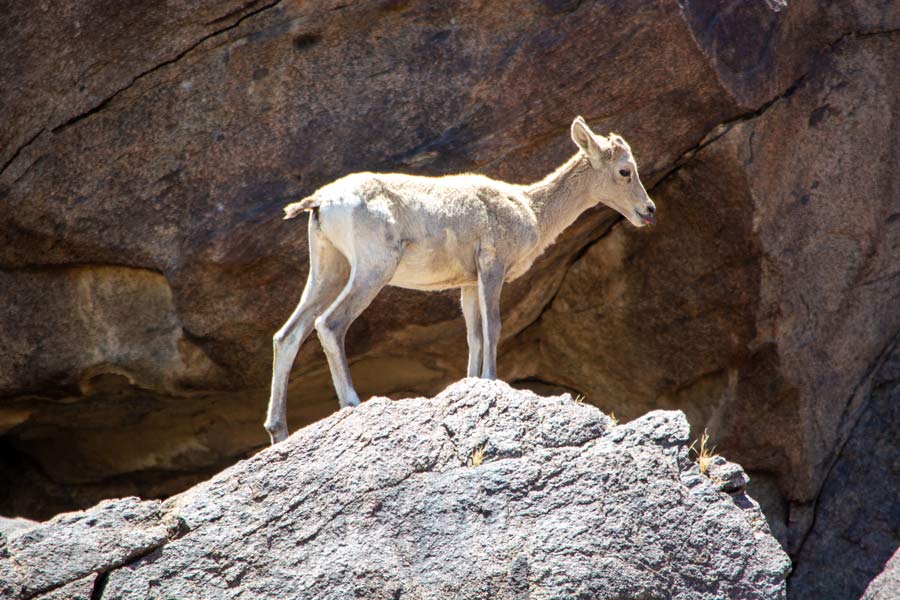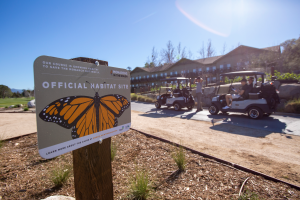A foundational belief shared by Native Americans is a reverence of nature and the responsibility of humans to respect and protect the environment of which they are a part.
This ethos carries over to the actions of tribal casino properties, which have been good stewards of the flora and fauna in which they are an element.
Following are some standout environmental practices championed by select tribally owned casino resorts in the U.S.
[Related: Native American Casinos Have Given Back Big During the Pandemic]
Agua Caliente Band of Cahuilla Indians
Owners of three casino properties in Southern California’s Coachella Valley, Agua Caliente Rancho Mirage, Agua Caliente Palm Springs and Agua Caliente Cathedral City, the Agua Caliente Band of Cahuilla Indians partnered with the California Department of Fish and Wildlife (CDFW), United States Fish and Wildlife Service and Coachella Valley Association of Governments to monitor endangered peninsular bighorn sheep that inhabit the San Jacinto Mountains, along with the more than 20,000 acres of tribal land and part of the surrounding Santa Rosa Mountains.

“The Tribe has long been proactive about protecting these beautiful animals that live on our reservation and drink from our streams,” said Agua Caliente Tribal Chairman Jeff L. Grubbe. “We have become deeply involved in conservation efforts related to the bighorn over the past decade.”
According to the tribe, the population of peninsular bighorn sheep have become more and more rare over the years, and since the early 1970s have been protected under state law. The sheep’s population plummeted due to diseases passed to them by domestic animals such as sheep and goats, and also due to a loss of habitat resulting from urban development, drought, invasive nonnative plants and predators.
According to the Agua Caliente Band of Cahuilla Indians, the tribe’s conservation plans work as follows:
Members of the tribe’s Planning & Development Department work closely with biologists from CDFW to monitor the local herds via high-frequency collars (via humane capture and release).
The data collected helps them better understand habitats, movements, health, birth locations, causes of death and other trends. This helps the tribe make conscious business decisions, keeping important herd locations in mind.
The tribe also spends hundreds of hours each summer to remove tamarisk trees, fountain grass and other invasive species that further diminish the variety of vegetation for desert bighorn sheep.
Through the tribe’s efforts, the population has more than doubled across the nine recovery zones.

Rincon Band of Luiseño Indians
Located in Valley Center, California, about 100 miles southwest of Los Angeles and 50 miles northwest of San Diego, Harrah’s Resort Southern California is the first solar-powered casino in Southern California.
In 2003, the resort launched CodeGreen, an all-encompassing effort to reduce the property’s environmental footprint. The result was the first solar-powered casino in Southern California, with a five-acre solar field north of the property powering its entire HVAC system.
Other green practices include:
- An onsite wastewater treatment plant that creates reclaimed water for cleaning and irrigation.
- A biodigestor that turns food waste into water that is sent to the plant.
- The conversion of 95% of the property’s lighting to LED.
- A comprehensive program that recycles everything from e-waste to outdoor billboard vinyls.

Pechanga Band of Luiseño Indians
Aside from comprehensive recycling efforts and other sustainability programs at Southern California’s Pechanga Resort Casino, two chefs at the property’s Temecula Creek Inn golf resort have set up a habitat for Monarch butterflies.
Called Monarchs in the Rough, the program set up by chef Matt Steffan promotes a habitat to support butterfly population and also benefits the resort’s gardens—which itself is fed by composted food scraps—via pollination.
In the realm of social sustainability, the tribe also announced it is increasing the minimum wage at the property to $17 per hour for non-tipped employees, an increase of $3 per hour based on current minimum wage and $2 over the 2022 rate, according to the tribe.
Pechanga is also doubling its annual team member bonus, resulting in staff receiving an annual bonus of up to $2,000, which represents an additional $1,000 over the regular bonus, depending on longevity. In some cases, team members will receive up to five times more than the regular bonus.

Tulalip Tribes
Located about 45 minutes north of Seattle, the Tulalip Tribes opened the Quil Ceda Creek Casino in February 2021, which at 126,000 square feet is more than twice the size of the previous Quil Ceda Creek Casino it replaced across the street.
The Tulalip Tribes also own popular Tulalip Resort Casino. Among the environmental programs operated by the tribes are two programs that help sustain the seafood that has in turn sustained tribal members.
The Bernie Kai-Kai Gobin Salmon Hatchery, located on the Tulalip Reservation, raises and releases approximately 11.5 million juvenile salmon each year, providing fishing opportunities for tribal members and also other commercial and sport fisheries stretching from Oregon to southeast Alaska.
The mission of the hatchery, which supports three species of salmon, is to sustain the fishing stock until the wild salmon population can return to adequate levels.
The mission to sustain the salmon stock is especially important because experts have estimated that only 2% of wild salmon fry survive to adulthood.
The Tulalip Tribes’ Shellfish Program is responsible for the technical management of the waters and habitats of the Salish Sea, which supports several species of clams, Dungeness crab and multiple species of shrimp, among other marine species.
According to the tribes, the Shellfish Program conducts studies to assess population/resource abundance, the quality of product, condition of population, beach/resource/restoration surveys and enhancement.
Read Next: More Inspiring Stories from the Meetings Industry







